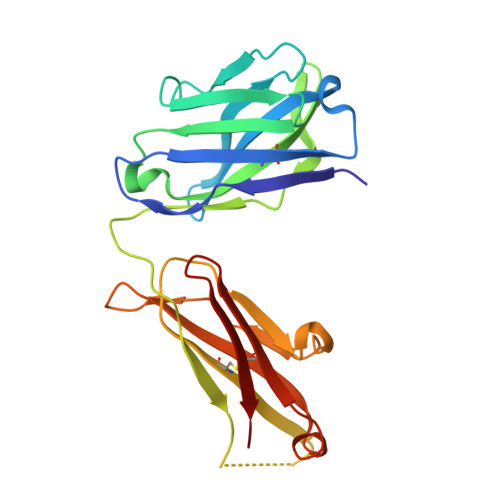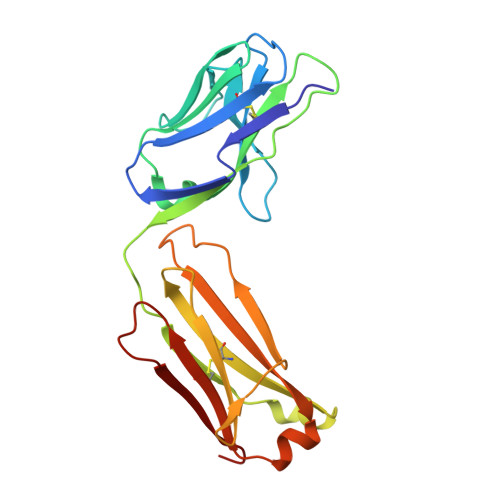Computational design of a specific heavy chain/ kappa light chain interface for expressing fully IgG bispecific antibodies.
Froning, K.J., Leaver-Fay, A., Wu, X., Phan, S., Gao, L., Huang, F., Pustilnik, A., Bacica, M., Houlihan, K., Chai, Q., Fitchett, J.R., Hendle, J., Kuhlman, B., Demarest, S.J.(2017) Protein Sci 26: 2021-2038
- PubMed: 28726352
- DOI: https://doi.org/10.1002/pro.3240
- Primary Citation of Related Structures:
5VR9, 5VSH, 5VSI - PubMed Abstract:
The use of bispecific antibodies (BsAbs) to treat human diseases is on the rise. Increasingly complex and powerful therapeutic mechanisms made possible by BsAbs are spurring innovation of novel BsAb formats and methods for their production. The long-lived in vivo pharmacokinetics, optimal biophysical properties and potential effector functions of natural IgG monoclonal (and monospecific) antibodies has resulted in a push to generate fully IgG BsAb formats with the same quaternary structure as monoclonal IgGs. The production of fully IgG BsAbs is challenging because of the highly heterogeneous pairing of heavy chains (HCs) and light chains (LCs) when produced in mammalian cells with two IgG HCs and two LCs. A solution to the HC heterodimerization aspect of IgG BsAb production was first discovered two decades ago; however, addressing the LC mispairing issue has remained intractable until recently. Here, we use computational and rational engineering to develop novel designs to the HC/LC pairing issue, and particularly for κ LCs. Crystal structures of these designs highlight the interactions that provide HC/LC specificity. We produce and characterize multiple fully IgG BsAbs using these novel designs. We demonstrate the importance of specificity engineering in both the variable and constant domains to achieve robust HC/LC specificity within all the BsAbs. These solutions facilitate the production of fully IgG BsAbs for clinical use.
Organizational Affiliation:
Eli Lilly Biotechnology Center, 10300 Campus Point Drive, San Diego, California, 92121.
















